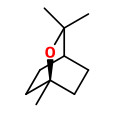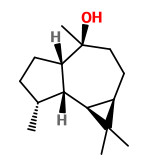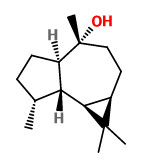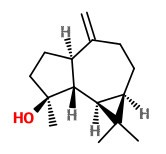Melaleuca cajuputi Roxb. - syn. Melaleuca cajuputi Powell; Melaleuca minor Sm. - Myrtaceae
cajaput, paperbark teatree, swamp teatree, Cajeputbaum, Kajeput
Original source of cajeput oil, although commonly Melaleuca leucadendra is cited as such.
„The majority of the oil is produced on the Indonesian island of Sulawesi. The name “cajeput” is derived from its Indonesian name, kayu putih (white wood).“ http://en.wikipedia.org/wiki/Cajuput_oil
Fresh leaves and branch tops of the cajeput tree provide the essential oil, the yield of the steam distillation is usually below 1%, but may be increased by modern distillation plants. Since the crude ethereal oil (Cajeputi aetheroleum crudum) is frequently colored greenish to bluish by means of copper ions from the distillation plants (green complexes of copper with 3,5-dimethyl-4,6-di-O-methylphloroacetophenon e.g.), a rectified oil is prescribed for medicinal use, as in the supplementary book to DAB 6 (EB 6, monograph „Oleum Cajeputi rectificatum“) or in the British Pharmaceutical Codex.
[Galle-Hoffmann, U., and W. A. König. „Weitere Teebaumöle aus der Gattung Melaleuca.“, Deutsche Apotheker Zeitung 139 (50), 1999, 53-56] https://www.deutsche-apotheker-zeitung.de/daz-az/1999/daz-50-1999/uid-1525
„Commercial cajuput oil is mainly derived from M. cajuputi subsp.cajuputi. The oil of this taxon mostly, but not always, contains substantial amounts of 1,8-cineole (3-60%), and the sesquiterpene alcohols globulol (trace-9%), viridiflorol (trace-16%) and spathulenol (trace-30%). Other compounds present usually in significant quantities are limonene (trace-5%), ß-caryophyllene (trace-4%), humulene (trace-2%), viridiflorene
(0.5-9%), α-terpineol (1-8%), a- and ß-selinene (each 0-3%) and caryophyllene oxide (trace-7%). This oil will hereafter be referred to as ‘type’ oil. The aromatic ether, cajeputol appears to be absent from the oil of this subspecies. Oil yield ranges from 0.4% to 1.2% (w/w%, fresh weight). The essential oil of M. cajuputi
subsp. cumingiana is highly variable in character. The main components reported in oil from Indonesia, Malaysia, Thailand and Vietnam (non-or low-1,8-cineole forms) are γ-terpinene (0-19%), and terpinolene (0-22%)… The essential oils of M. cajuputi subsp.platyphylla occur in two chemotypes. Typically, the oils contain significant quantities of α-pinene (34-73%), with lesser amounts of 1,8-cineole (0.2-3%), γ-terpinene (trace-2%), p-cymene (trace-1%), terpinolene (trace-1%), ß-caryophyllene (2-14%), aromadendrene (1-9%), humulene (1-7%), viridiflorene (trace-3%), caryophyllene oxide (trace-2%), globulol (trace-6%), viridiflorol (trace-2%), spathulenol (trace-3%) with an absence of cajeputol.“
[Tea Tree: The Genus Melaleuca. Southwell, I.A., Lowe, R.F., Series Medicinal and Aromatic Plants, Industrial Profiles, 1999, vol. 9, 228]
Cajeput oil is used in aromatherapy and as an antiseptic in nose drops.
[Medicinal Plants of the World. Ben-Erik Van Wyk and Michael Wink, Pretoria 2004, 202]

Melaleuca cajuputi as Melaleuca minor
Kohl, F.G., Die officinellen Pflanzen der Pharmacopoea Germanica, t.90 (1891-1895)
http://plantillustrations.org/species.php?id_species=652235






